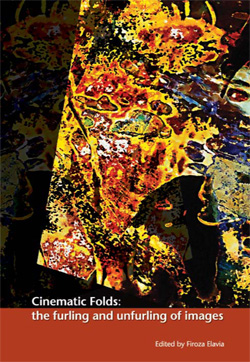Part of Fall 2008 - A Lower World
Colouring the Virtual: Jim Campbell and Cinematic Futurity
Talk by Erin Manning, moderated by Firoza Elavia
Pleasure Dome is delighted to present a talk by film and visual studies philosopher, Erin Manning (Concordia University) on artist Jim Campbell.
Jim Campbell’s sculptural installations and filmic images have pioneered new ways of looking: the closer you get to the images, the more intangible they become. In her talk Manning will explore how Campbell’s work creates propositions for vision that alter not only how an image is seen in its framed stability, but how the instability of its composition occasions kinesthetic experience that destabilizes the visual predominance of moving images.
Erin Manning is Assistant Professor in studio art and film studies at Concordia University (Montreal) as well as director of the Sense Lab, a laboratory that explores the intersections between art practice and philosophy through the matrix of the sensing body in movement www.senselab.ca. In her art practice she works between movement, painting, fabric and sculpture. Publications include Politics of Touch: Sense, Movement, Sovereignty and Ephemeral Territories: Representing Nation, Home and Identity in Canada. Her current book-project is called Relationscapes: Movement, Art, Philosophy.
Firoza Elavia is Pleasure Dome collective member and completing her doctoral dissertation in the philosophy of film and new media studies at York University, Toronto.
+
Book launch for Pleasure Dome’s publication Cinematic Folds: the furling and unfurling of images
Join us also to celebrate the launch of Pleasure Dome’s most recent anthology, Cinematic Folds: the furling and unfurling of images, edited by Firoza Elavia with images curated by Linda Feesey.
Traditionally, the cinematic has been understood as the visual movement occurring from the rapid succession of one film frame to another. The notion of the cinematic in this book begins instead with an understanding that it is to be conceived as a mode of perception and experience of the world. Cinematic movement, it is argued, is what occurs in our perception of things, in the flow between the tangibility of the world, images (material/immaterial) and the mind. These infinite oscillations between world, image and mind, between what is mental and material and, what lies inside and outside film constitute the force fields of Cinematic Folds: the furling and unfurling of images. The zones between media experimentation, writing, reading and thinking come to resonate and flow with each other, enduring over the pages of this volume.
In the first section of this anthology, “Movement of matter: passion, velocities and rhythms,” the selected essays are inscribed by intensive movements that fold between sensations of horror, anxieties of abjection and, performance and sexuality among others. Each of the essays presents a possibility on the flow between matter-image (world) and image-matter (image). Drawing upon the construction of the world becoming-image and image becoming-world, the writers invite attention to the movements and relations between world, brain and image folding in and out of each other.
In the second section, “Invisible spectrum of the perceptible,” the writers are preoccupied with the impalpable life of images. These essays examine movements occurring in the interval between two images or movements or in that which occurs between world and mind. The writers signal the stops, gaps and transitions ensuing between things, drawing attention to immanent movement and to virtual time. Exploring the in between, these essays range from a discussion on colour theory, virtual cinécriture and atmospheric scores.
Essays include those by Erin Manning, Anna Powell, Steven Eastwood, Carolyn Lee Kane, Linda Marie Walker, Maria Walsh and others.
Art projects include works by Carl Brown, Jubal Brown, Bruce LaBruce, Donigan Cumming, GB Jones, Diana Thorneycroft, and Fun TV (Willy Lemaitre & Eric Rosenzweig).
